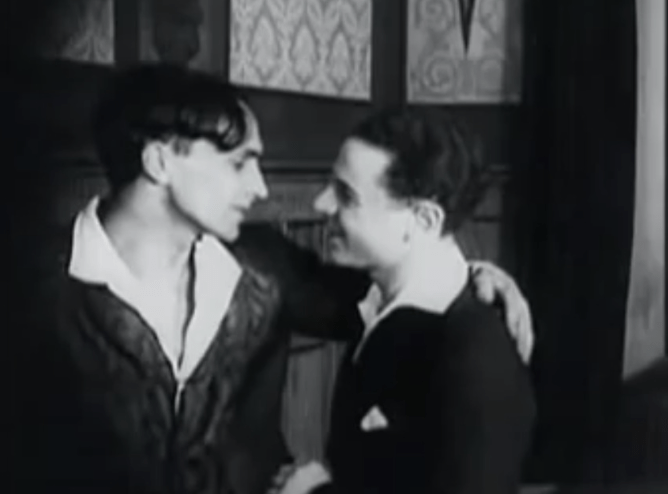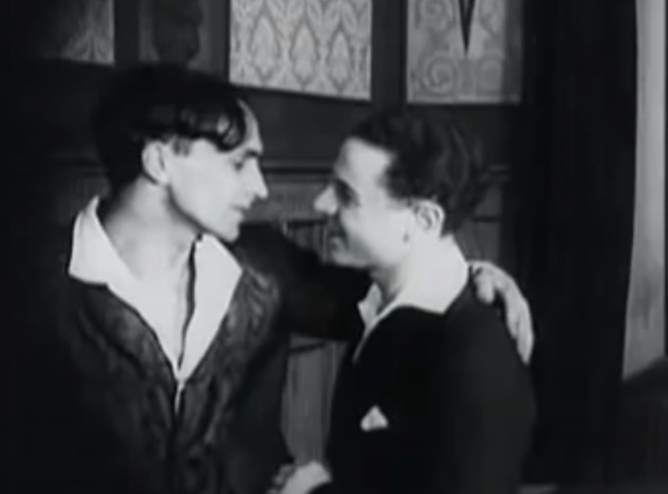With silvery streaks and speckles dancing across the black-and-white frame, piano soundtracks worthy of a school dance recital, and dialogue rendered in text, perhaps nothing could seem more old-fashioned than a silent movie. You might expect the story of such a film to be as outdated as its accompanying technology. But in the case of 1919’s Different From the Others, you couldn’t be more mistaken. Anders als die Andern, as it was originally known in Germany, was so far ahead of its time that it was banned from public exhibition after a year, and in the decades following, almost every copy was destroyed. Almost.
The cause for controversy is that Different From the Others portrays gay men as victims of vicious and totally unnecessary discrimination. There could be no mistaking the film’s intent, since it was co-written by Dr. Magnus Hirschfeld—a gay man and one of Europe’s first LGBTQIA activists—and funded by his organization, the Institute for Sexual Science. Shameless in its activism, the film repeatedly references Paragraph 175, the German law against homosexuality the film was part of a campaign against. (“Paragraph 175” was even the film’s original subtitle.) Dr. Hirschfeld plays himself in multiple scenes to explain to various characters (and by extension, the audience) that LGBTQIA people suffer “not from their condition,” but from prejudice. Despite its heavy-handed messages, though, Different From the Others is more than a progressive propaganda piece. It is a melodrama in the best tradition of silent film, where romantics who ache with desire are plunged into misery by accidents of fate.
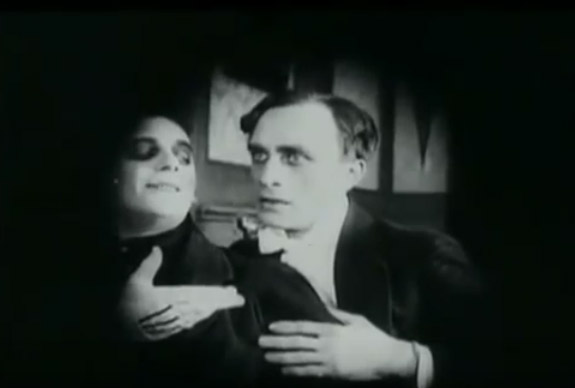
Paul is confronted by his blackmailer, Franz. via YouTube
The story of Different From the Others concerns Paul Körner, a gay violinist whose passion for music and search for love is assaulted on all sides by ignorance and hatred. The film challenges stereotypes at every turn. Paul is not a predator but prey: throughout the film he is stalked by Franz, a sinister figure who demands payment to keep Paul’s orientation a secret. The heteronormative expectations Paul is held to by others are savagely portrayed. He is expelled from boarding school for his close friendship with another boy. At university, Paul’s classmates physically drag him away from his studies to “see the girls”—girls who are shocked and offended when Paul does not appreciate the kisses they force upon him.
Perhaps most importantly of all, Different From the Others portrays LGBTQIA suicides not as tragic mysteries, but reactions to real mistreatment. At the funeral of a gay man who killed himself, one of the mourners confronts the victim’s unsupportive family: “You and the rest of society have his death on your conscience!” In the final scene, Magnus Hirschfeld’s character advises the gay lover of the deceased: “If you want to honor the memory of your friend, then you mustn’t take your own life, but instead keep on living to change the prejudices whose victim—one of countless many—this dead man has become.”
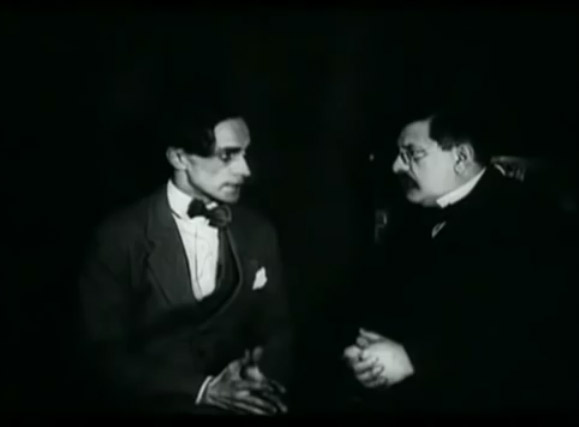
Dr. Hirschfeld (right) plays himself advising the protagonist to accept his orientation. via YouTube
Although cisgender gay men are the focus of Different From the Others, the scene of a lecture by Hirschfeld’s character places gay and lesbian identities within a larger context of gender variance, including transgender and intersex people, that is presented as equally worthy of acceptance and understanding. This awareness of and advocacy for the larger “umbrella” would be remarkable today; in 1919, it was nothing short of revolutionary.
The film is groundbreaking for more than just its sympathetic LGBTQIA representation. Also of interest is the film’s plot structure, which cleverly begins in the middle of the story, then flashes back to the beginning and works its way forward. Tension is heightened as the viewer recognizes signs of tragedy which have already happened in the film’s opening scenes, but which the characters in the flashback cannot anticipate. Creating a uniquely-structured film like Different From the Others is but one highlight of the career of Magnus Hirschfeld, a brilliant mind and fearless activist whose life and work has filled many volumes and its own documentary, The Einstein of Sex. The protagonist Paul is played by Conrad Veidt, who would later appear in not only The Cabinet of Dr. Caligari and Casablanca, two of the most famous films of all time, but also The Man Who Laughs, which would in turn inspire Batman’s archenemy, the Joker.
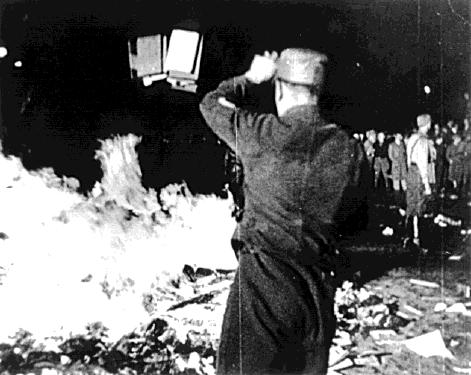
Nazis burned the library of Hirschfeld’s pro-LGBTQIA Institute. Public domain image via Wikimedia Commons
Different From the Others was received with outrage when it was released in Germany. By 1920, public screenings of the film were banned, and access to the film was limited to medical professionals. Turning this setback into an opportunity, in 1927 Dr. Hirschfeld edited large portions of the movie into an academic sex education film called Laws of Love. When the Nazis took control of Germany in 1933, every available copy of Different From the Others was destroyed, but Laws of Love was regarded more leniently. All existing versions of Different From the Others are derived from these excerpts. Magnus Hirschfeld can thus be credited with not only for his part in creating Different From the Others, but engineering the means of its resurrection.
Different From the Others was screened last February at the Berlin International Film Festival, partly to celebrate the 30th anniversary of the Teddy Awards, the Festival’s commendation for LGBT films. Most importantly, the film has been uploaded to YouTube. The film that so many hateful people tried to prevent anyone from seeing ever can now be watched online for free, at any time, by anyone with an Internet connection. I can think of no better vindication for this artful message of tolerance and love which was driven so close to complete eradication.
Casey Bohn is a writer and illustrator. She is a contributor to the film journal Weng’s Chop and her latest comic is coming soon from Oily Comics.
—The Mary Sue has a strict comment policy that forbids, but is not limited to, personal insults toward anyone, hate speech, and trolling.—
Follow The Mary Sue on Twitter, Facebook, Tumblr, Pinterest, & Google+.



